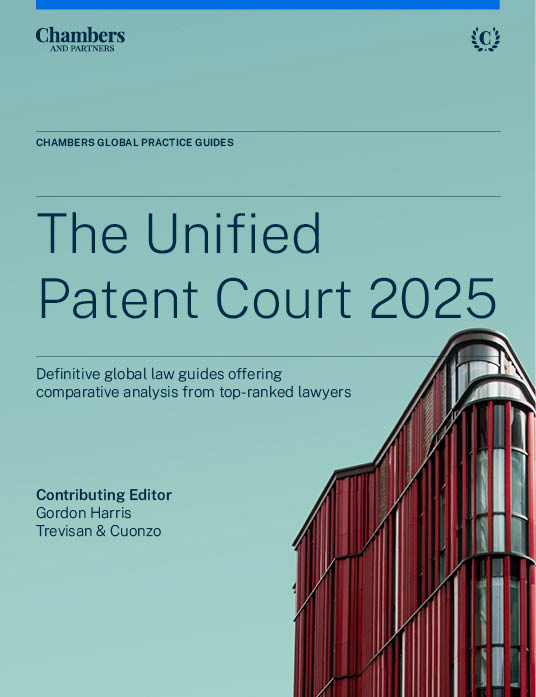
The Unified Patent Court 2025
The new Unified Patent Court 2025 guide covers a range of courts and jurisdictions across the European Patent Organisation. The guide provides the latest legal information on UPC judges and court competence, the types of action pursued and the legal topics covered therein, leading cases, procedural issues, remedies and damages, and the future of the UPC.
Last Updated: June 30, 2025
Compare law and practice by selecting locations and topic(s)
Select Locations

Select Topic(s)

Please select at least one location and one topic to use the compare functionality.
Introduction
On 1 June 2023, the Unified Patent Court in Europe opened its doors for the first time. In doing so it became the first multinational jurisdiction in the world to deal with private rights. At a stroke it transformed the patent law architecture in Europe and created the opportunity for transnational injunctions and damages awards.
It was the product of years of development and negotiations across Europe. The Court’s rules were only finalised on the 19th draft and involved a great deal of bartering and compromise. However, the end result is a holistic system of litigation with first instance courts around Europe all operating under the same rules of procedure, and a Court of Appeal based in Luxembourg to bring together the decisions and create a consistent jurisprudence.
This introduction aims to set out the basics of the new court and system and create the foundation from which other contributors can build a comprehensive model of the new court system in this overall guide to the new Unified Patent Court (UPC).
History
There has been a form of centralised patent system in Europe for over 50 years, based around the European Patent Convention of 1973 (EPC). The EPC created an environment for centralised patent applications and prosecution, based in Munich and allowing for a single application that could be prosecuted in one office and would, in the end, yield a basket of national patents. There are currently 39 contracting states of the EPC.
The EPC is not a treaty of the European Union, and it includes countries that are not even in the Enlarged Economic Area (EEA). The most notable example is the United Kingdom, which recently departed the European Union but remains a full member of the EPC. Other examples are Iceland, Switzerland and Turkey.
As part of the ongoing project to perfect the Single European Market within the European Union, the notion of a Unified Patents Court emerged originally from the Community Patent Convention of 1975. However, it was not until February 2013 that 25 member states of the EU signed the Unified Patents Court Agreement (UPCA), which set in train the preparation of the necessary rules and structures for the Court that finally opened in June 2023.
Which Countries Can Participate?
Any full member state of the European Union has the option to participate, but Spain, Poland and Croatia chose not to sign the UPCA in 2013 and have not done so in the following years.
To participate in the Court procedure, all the signatories of the UPCA have to formally ratify the Agreement. As of the date of publication of this guide (30 June 2025), 18 European Union member states have formally ratified the UPCA and are now participating member states of the new court. They are (in full): Austria, Belgium, Bulgaria, Denmark, Estonia, France, Finland, Germany, Italy, Lativa, Lithuania, Luxembourg, Malta, Netherlands, Portugal, Romania, Slovenia, Sweden.
Signatories that are yet to ratify are Cyprus, Czechia, Greece, Hungary, Ireland, and Slovakia. The remaining country of the original 25 signatories is the United Kingdom, which withdrew in 2020 following the Brexit referendum.
What Patents Are Involved?
The default position is that all European patents designated in participating member states are within the jurisdiction of the UPC. However, the option exists for owners of extant patents to opt out of the system. There was a sunrise period prior to the commencement of the UPC for patentees to notify the court office that they wished to opt out specific patents. During a transitional period for seven years from the commencement of the UPC, patent owners can still have their patents opted out of the system.
Once opted out, a patent is outside the scope of the UPC for its full life, unless the owner exercises its right to opt back in at any time, for example if it wishes to commence a large enforcement action. Once a patent is opted back in, it cannot be opted out again.
As of the commencement of the UPC, another option is open to new patent applicants. Instead of seeking a basket of national patents as in the previous system, they may seek a UP designation, which gives rise to a single Unitary Patent across the full scope of the participating member states. National designations can still be sought for non-participating or non-EU countries.
Structure of the UPC
The UPC has two tiers. At first instance there are Local Divisions, a Regional Division and a Central Division. Above that sits a single Court of Appeal. Specific questions of EU law can also be referred to the Court of Justice of the European Union.
Each participating country is entitled to host a Local Division court. Due to the sheer volume of cases handled in Germany, it was allowed four Local Divisions. Some countries have not yet established a Local Division. Cases that should be commenced in those countries (see “Jurisdiction” below) must be commenced in the appropriate Central Division.
If a group of countries agreed that they did not have sufficient work for individual Local Divisions, they were entitled to open a Regional Division – a single court that covers all of the countries involved. Only one such Regional Division has been created so far – a Baltic Division covering Sweden, Latvia, Estonia and Lithuania.
The Central Division has its seat in Paris, with sections in Milan and Munich. They primarily deal with revocation actions and declarations of non-infringement, with cases allocated across sections based on the technology of the patent (see “Jurisdiction” below).
The single Court of Appeal is based in Luxembourg, which is also the home of the CJEU. The role of the Court of Appeal is crucial. Although all the Local Divisions are operating under the same procedural rules, judges will have different backgrounds, increasing the likelihood of some divergence in the early decisions on the key patent law principles. The job of the Court of Appeal is to create consistency and to establish clear doctrines in relation to important patent controversies like the doctrine of equivalents, file wrapper estoppel and approaches to claim construction.
In addition, there are two Centres for Arbitration and Mediation of patent disputes, in Lisbon and Ljubljana.
In the Local/Regional Divisions, cases are heard by a panel of three legally qualified judges and typically one technically qualified judge. In the Central Division, the panel comprises two legally qualified judges and one technically qualified judge. The Court of Appeal comprises three legally and two technically qualified judges.
The judges, along with the mediators and arbitrators, are all regularly trained. The training centre in Budapest is not yet operational, pending ratification of the UPCA by Hungary, and training takes place in other locations, selected by the Court on a case-by-case basis.
Operation and Procedure of the UPC
The Local Divisions are decentralised and operated locally, though actions in all divisions can be commenced using the UPC’s Case Management System (CMS) – an online resource that governs the commencement and management of all UPC cases at all levels. More information on the CMC can be found at the UPC’s website.
All the first instance Divisions and the Court of Appeal are operated in accordance with the Rules of Procedure of the Unified Patent Court. This is a comprehensive set of rules governing all circumstances arising in the conduct of litigation before the UPC. If a question of EU law is referred to the CJEU, then the rules of that court apply to the procedure.
The UPC rules stipulate a strict timescale for the conduct of cases in all first instance divisions. The objective is to deliver effective and high-quality justice in a timely fashion. Accordingly, the rules stipulate that all cases should be completed approximately 12 months after they are commenced.
There are rules governing the necessary content of initial pleadings, as well as detailed provisions regarding issues such as evidence gathering, the conduct of experiments, possible cross-examination of witnesses, and very limited orders for the disclosure of documents. The rules are an amalgam of rules from many of the countries participating in the UPC, and indeed UK procedure as it was involved in the preparatory stages.
There are provisions for significant cost recovery by the successful parties – something that is generally not common in European patent litigation.
Jurisdiction – Commencement of Actions
The Rules of the UPC provide for the nature of the jurisdiction, which is in line with the Recast Brussels Regulation and the Lugano Convention.
Infringement actions should be brought in the Local or Regional Division for the country where the defendant is domiciled. If that country does not have a Local or Regional Division then the infringement action can be brought in the appropriate seat of the Central Division. Alternatively, infringement actions can be brought before the Local or Regional Division where the actual or threatened infringement has occurred or may occur.
Actions for revocation or declarations of non-infringement are to be brought in the appropriate seat of the Central Division. The correct seat of the Central division is decided on the basis of technology types. These are divided as follows, using the International Patent Classification operated by the World Intellectual Property Organisation:
- Milan – Class A – Human Necessities including pharmaceuticals;
- Munich – Classes C and F – Chemistry, metallurgy and mechanical engineering; and
- Paris – Classes B, D, E, G and M – Physics and electronics plus all cases regarding Supplementary Protection Certificates.
If a counterclaim to an infringement action contains a request for revocation, the presumption is that the case will remain in the Local Division where the infringement action was commenced. The court has discretion to transfer the case to a Central Division if that seems appropriate. So far, this option has been exercised in a very limited number of cases, mostly in situations where a parallel revocation action was pending before the Central Division.
Actions regarding Standard Essential Patents (SEPs) can be brought in the UPC, which has reserved the right to set rates for Fair, Reasonable and Non-Discriminatory (FRAND) licence terms by way of a counterclaim to an infringement action.
There are comprehensive provisions for the grant of preliminary relief.
Jurisdiction – Enforcement of Judgments
If the court finds the patent in suit valid and infringed, it may grant an injunction covering all the participating countries, if the patent in suit was designated in each of those countries. In the case of Unitary Patents, a full injunction will be automatic. Damages may also be recovered in relation to sales in all participating countries where the patent was designated. This covers an economic area of over 300 million consumers and a total GDP of almost EUR14 trillion.
A recent decision of the CJEU (BSH v Electrolux) has indicated that the jurisdiction of the UPC may extend beyond the boundaries of the participating countries. The judgment confirms that the courts of a country where a patent is granted have exclusive jurisdiction over questions of validity and registration but that the courts of the country where the defendant is domiciled have a general jurisdiction over the question of infringement in any country where the patent is granted. This includes the EU states not, or not yet, participating in the UPC, and third countries, like the UK and Turkey, where a European patent can be designated in the EPC system, even though they are outside the European Union.
This so-called long-arm jurisdiction has been applied several times already by Local Divisions of the UPC.
Summary
The UPC has now been running for more than two years and appears to have already made a significant impact. The number of actions commenced (over 700), the quality of its judgments (generally considered to be strong) and the interest shown from outside Europe all speak of an effective and properly functioning court.
The Court of Appeal is already fulfilling its role to establish consistency across all of the Divisions of the court.
This guide will now look at the progress of the UPC on a “division by division” basis, providing users with practical information regarding the operation of the divisions, along with strategic and tactical guidance from firms with know-how and experience from all over Europe.

